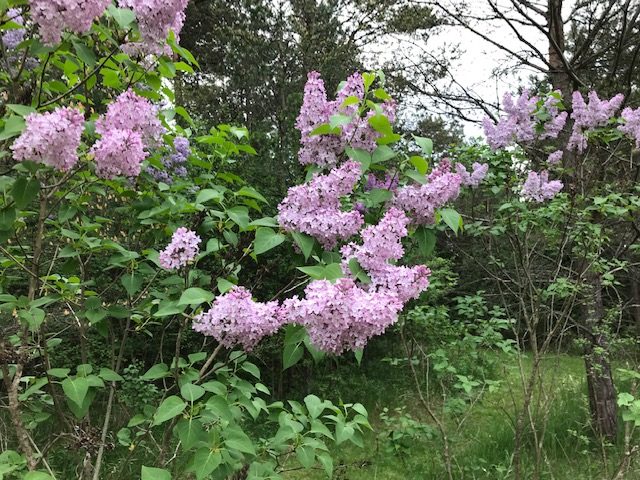We have recently been asked two questions about lilacs. One is about powdery mildew and the other is about pruning. You will find the responses from Judy Kaufman, Northumberland Master Gardener to these questions below.
Powdery Mildew
Powdery mildew is a common fungal disease that occurs on many different plants, including common lilacs. Fortunately, powdery mildew is more of a nuisance than a serious health threat, and there are a number of management techniques that can be used to combat the issue.
Below Is a quote from a University Horticulture Class that answers your question.
“Planting resistant cultivars is one of the best ways to avoid problems with powdery mildew. A few reliable choices are ‘Charles Joly’, ‘Sensation’, and ‘Old Glory’. Once you have selected resistant plants, make sure your lilacs are planted in a sunny location with good air circulation. This will not only help limit disease issues, but also ensure that your lilacs bloom to their fullest potential. Regular pruning will also increase airflow and reduce disease potential. It is best to prune lilacs shortly after they have flowered. “
Powdery mildew on lilacs is usually only an aesthetic issue. It is often most apparent late in the season, not too long before the shrubs prepare to drop their leaves.
Powdery mildew overwinters in plant debris. If you notice powdery mildew on the foliage of your lilacs, thoroughly rake up the leaves as they fall and dispose of them to help reduce infection next summer.
Remove all the lilac leaves that have mildew on them and don’t put them on your compost. Bag them and put them out for the garbage. That also goes for any other plant where you notice the mildew.
Pruning Lilacs
The first thing to keep in mind is that if you prune a lilac shrub at the wrong time of year the only bad thing that will happen is that it won’t flower. It will flower the following year but not the year that you pruned.
All lilacs are best pruned about 1 to 2 weeks after they finish blooming. Cut them back right below the panicle. If the bush has become too big you can cut out some of the branches at that time as well, but remember do not cut more than a quarter to a third of the branches at each pruning .
Monitor the miniature lilac in the spring. When you prune the plant right after the flowers die you won’t sacrifice the buds that will develop into next year’s blossoms.
Deadhead spent blossoms by cutting the stem below each cluster, back to the first set of side shoots. Alternatively, when deadheading blossoms on stems that are too tall, cut back to a set of side shoots at the desired height. Make cuts just enough above the side shoots so the shoots are not damaged but not so much above them so that a long stub of the branch is left behind.
Prune all dead or diseased or dangerous branches, or ones that cross and rub on other branches at any time you see them. This applies to all shrubs and trees, not just lilacs!
You may be interested in the Warkworth Millennium Trail and Lilac Festival that takes place the last weekend in May in Warkworth. The trail has a very large (160+) selection of different varieties of lilacs that are in bloom from mid May to mid June.
Authored by Judy Kaufmann

